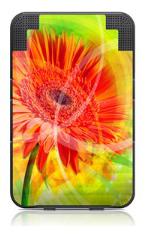Project Sunflower: Usability Study

 As part of our eBook usability study, this part deals with studying the devices from the eBook reader point of view. All three devices, Apple iPad 2, Amazon Kindle DX and Motorola XOOM have eBook reading capabilities, with Kindle being a dedicated eBook reader. The aim of the study was to analyse the ease with which a user can perform a particular task on each device, the user-friendliness of the UI and the eBook reading experience the device has to offer. Two studies were devised for the purpose of our research. One study aims at understanding the user experience the devices have to offer in general, and the second study aims at understanding the eBook reading experience.
As part of our eBook usability study, this part deals with studying the devices from the eBook reader point of view. All three devices, Apple iPad 2, Amazon Kindle DX and Motorola XOOM have eBook reading capabilities, with Kindle being a dedicated eBook reader. The aim of the study was to analyse the ease with which a user can perform a particular task on each device, the user-friendliness of the UI and the eBook reading experience the device has to offer. Two studies were devised for the purpose of our research. One study aims at understanding the user experience the devices have to offer in general, and the second study aims at understanding the eBook reading experience.
Internet access was enabled for all devices for the purpose of the study, as connecting to the internet is not part of the eBook reading activity.
Study 1
The study was implemented in two phases, the difference being the instructions given to the user.
Phase 1
In this phase, the devices were connected to the internet, and the users were asked to download and open an eBook on the respective device. They were not told about specific apps that were needed to render eBooks, and were given no specifics whatsoever. The users were not given any instructions so as to get a firsthand view of where they try to get the eBooks from, whether they even know about the requirement of specific apps to render eBooks on the devices and of any other OS specific functions.
This study helped evaluate whether prior experience with the OS played a significant role in understanding OS specific requirements such as apps, the app stores the devices used, and the place to get eBooks from.
Phase 2
In this phase, the users were given more specific instructions about the applications that they would have to download to be able to read eBooks in the ePub format. This test helped answer questions such as, did the user know where to get the application, which application to get, did they have trouble installing the application, how to download eBooks on the device, and so on.
This study gave a very clear understanding about the intuitiveness of the UI, the difficulty or ease in performing tasks, and whether previous experience with either similar devices or the operating system played a part in performing the given task.
Study 2
This study was devised to evaluate the eBook reading experience each of the devices had to offer. The participants of the study gave feedback on the overall device design from point of view of an eBook reader, the user-friendliness of the user interface from the eBook reading point of view, and inputs on the in-book settings the devices allowed the users to change.
In this study, the users were asked to inspect two areas of the eBook reader or eBook reading app. First, the overall readability of eBooks was tested by asking the users to read a book for ten minutes on the device. The eBooks were rendered at default settings. This part of the test was to get feedback on the eBook reading experience the device offers. For the next part of the test, the users were asked to find and change the settings they wished to change when reading, and also inspect the settings the device offered. For this part of the study, each user was given five minutes. This dedicated time to change settings allowed the users to find all or most settings the software offered, and identify settings the software lacks or are unnecessary.

